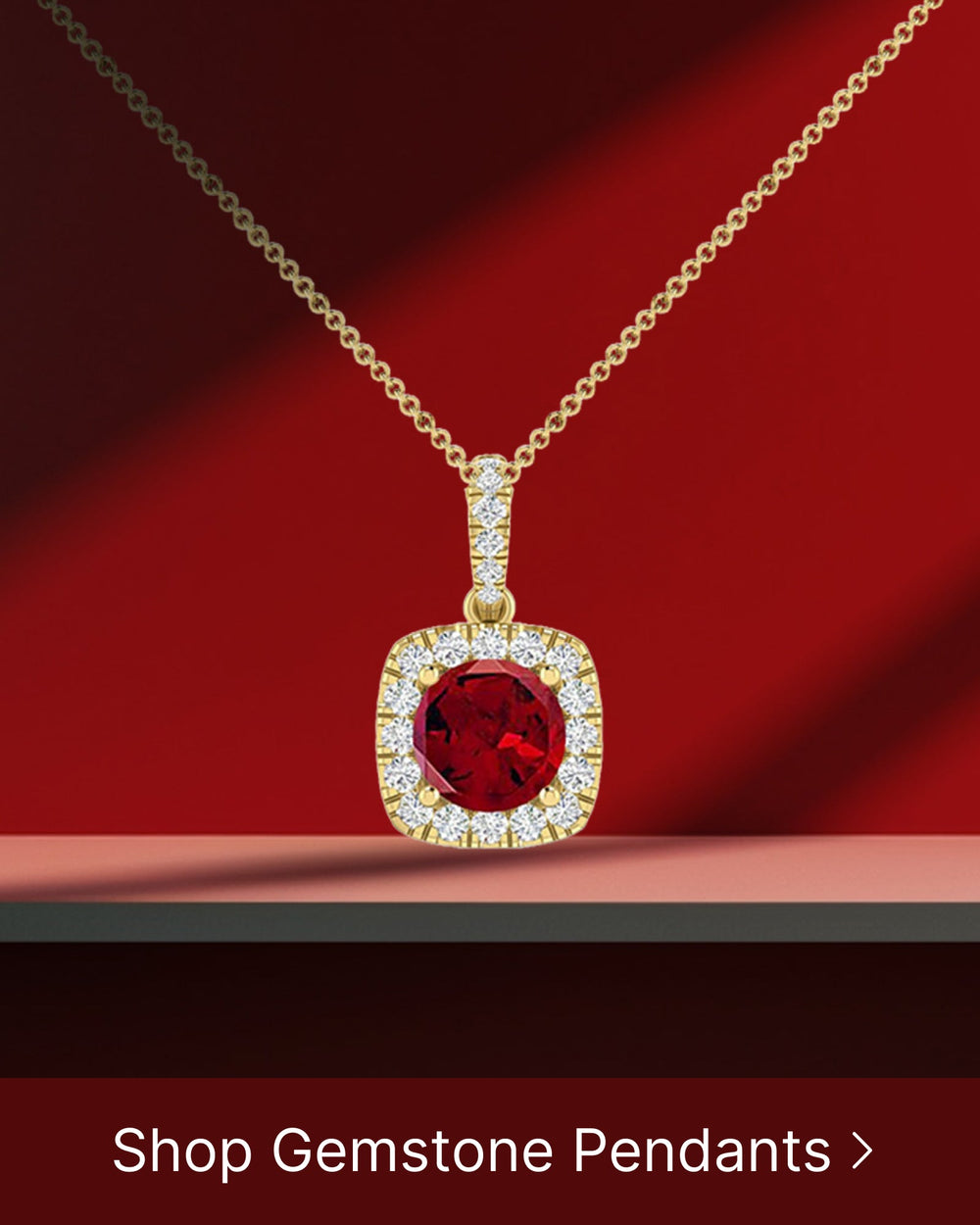Greek mythology is rich with captivating tales of gods and heroes, and within these stories, jewelry plays a significant role. From the symbolism behind the jewelry to the impact it had on the characters, we can uncover fascinating insights into the ancient Greek world.
Understanding the Role of Jewelry in Greek Mythology
In Greek mythology, jewelry held great importance beyond mere ornamentation. It served as a powerful means of expressing symbolism and reflecting the characters' values and beliefs.
The ancient Greeks believed that jewelry possessed a mystical quality, capable of conveying messages and representing various aspects of their culture. Each piece of jewelry had a story to tell, weaving together mythology, history, and artistry.
The Symbolism of Jewelry in Ancient Greece
Jewelry in ancient Greece was often imbued with deep symbolism. For example, the iconic olive wreath symbolized victory and prowess, while the serpent-shaped bracelets represented protection and rebirth.
But the symbolism went beyond these well-known examples. Every gemstone, metal, and design had its own significance. The use of gold, for instance, represented the divine and immortal nature of the gods and heroes. Silver, on the other hand, symbolized purity and wisdom.
Furthermore, the intricate patterns and motifs engraved on the jewelry conveyed specific meanings. A labyrinth design, for example, represented the complex journey of life, while a thunderbolt motif symbolized the power of Zeus, the king of the gods.
The jewelry worn by the gods and heroes reflected their divine nature and represented the traits they possessed. Each piece had a story and meaning tied to the character it adorned, making it more than just a decorative item.
The Connection Between Gods, Heroes, and Jewelry
Greek mythology portrays gods and heroes as beings intertwined with the mortal realm. Jewelry served as a tangible link between the human and divine worlds, enabling heroes to access their godly powers and protection.
For instance, Hercules wore the Nemean Lion's golden pelt, symbolizing his strength and invincibility, granted to him by the gods. The jewelry heroes wore served as a reminder of their extraordinary abilities and their connection to the divine.
Moreover, jewelry played a significant role in the relationships between gods and mortals. It was not uncommon for gods to gift mortals with jewelry as a sign of favor or protection. These divine accessories bestowed upon mortals not only enhanced their physical appearance but also granted them divine blessings and guidance.
Additionally, jewelry served as a form of communication between gods and mortals. Enigmatic symbols and inscriptions on jewelry acted as messages from the gods, guiding mortals on their quests or warning them of impending danger.
In conclusion, jewelry in Greek mythology was more than just a fashion statement. It was a reflection of the gods' and heroes' identities, a conduit for divine powers, and a means of communication between the mortal and divine realms. The intricate symbolism and craftsmanship of ancient Greek jewelry continue to captivate and inspire us today, reminding us of the rich mythology and cultural heritage that shaped the ancient world.
The Significance of Jewelry in Greek Myths
Jewelry in Greek myths went beyond symbolizing power and identity; it also represented key themes and motifs inherent in these tales.
Throughout Greek mythology, jewelry played a significant role in shaping the narrative and enhancing the characters' attributes. These precious adornments were not merely decorative; they held immense power, symbolized status and wealth, and carried deep cultural and mythical meanings.
Jewelry as a Source of Power
Some jewelry possessed magical properties that bestowed immense power upon the wearer. For example, the Ring of Gyges, a mythical artifact mentioned in Plato's "Republic," rendered its wearer invisible. This extraordinary ability allowed the wearer to navigate the world unseen, influencing their actions and shaping the course of events.
Moreover, certain jewelry items were believed to grant protection, such as the Aegis, a breastplate made of goatskin worn by Zeus and later by Athena. The Aegis symbolized the power and authority of the gods, offering not only physical protection but also serving as a display of their dominance. It was adorned with the head of the Gorgon Medusa, whose terrifying visage turned enemies into stone.
Another notable example is the Golden Fleece, a legendary object sought by Jason and the Argonauts. This shimmering fleece, which came from a divine golden ram, possessed extraordinary powers and was coveted by many. It represented not only wealth but also the quest for power and glory.
Jewelry as a Symbol of Status and Wealth
In ancient Greece, jewelry served as a marker of social status and wealth. Noble characters often wore intricate and valuable pieces to showcase their importance and reinforce their elite position within society.
For instance, the Necklace of Harmonia, given as a wedding gift to the bride of Cadmus, demonstrated the prosperity and status of the ruling family. This exquisite piece, said to have been crafted by the gods themselves, was adorned with precious gemstones and pearls, symbolizing opulence and luxury. Its beauty and rarity made it a coveted possession, representing the allure of wealth and privilege.
Similarly, the Crown of Ariadne, worn by the princess of Crete, was a symbol of her royal lineage and power. This magnificent crown, intricately woven with gold and adorned with precious gemstones, showcased her status as a member of the ruling family. It was a testament to her importance and authority.
Furthermore, jewelry was often used as a form of currency and a means of displaying wealth. Elaborate bracelets, necklaces, and earrings were not only fashionable but also served as portable wealth. They could be easily exchanged for goods or used to secure alliances and favors.
In conclusion, jewelry in Greek myths played a multifaceted role, representing power, protection, status, and wealth. These precious adornments were not only symbols of beauty but also carried deep mythical significance. They added depth and richness to the stories, highlighting the complex relationships between gods and mortals, and the desires and ambitions that drove their actions.
Notable Jewelry Pieces in Greek Mythology
Within the realm of Greek mythology, several notable jewelry pieces hold intriguing origins and tales of their own.
Let us delve deeper into the fascinating stories behind these legendary adornments.
The Necklace of Harmonia
The Necklace of Harmonia, forged by the divine craftsman Hephaestus, possessed a mesmerizing beauty. Its intricate design, adorned with precious gemstones, shimmered with an ethereal glow that captivated all who laid eyes upon it.
Legend has it that the necklace was a wedding gift from Hephaestus to Harmonia, the daughter of Ares and Aphrodite. However, this exquisite piece of jewelry brought upon a curse that brought turmoil and tragedy upon its owners.
As the necklace passed through generations, it became a symbol of both great fortune and misfortune. Its enchanting allure enticed many, but its curse proved to be a heavy burden. Those who possessed it faced a lifetime of hardships and heartbreak, as the necklace seemed to attract chaos and discord wherever it went.
Thus, the Necklace of Harmonia serves as a cautionary tale, reflecting the notion that even the most dazzling jewelry can be accompanied by unforeseen consequences.
The Ring of Gyges
The Ring of Gyges, discovered by the shepherd Gyges, is a legendary artifact that granted its wearer the power of invisibility. This seemingly ordinary ring held extraordinary abilities, forever altering the fate of those who possessed it.
As Gyges stumbled upon the ring, he quickly realized the immense power it held. With a mere twist of the band, he could become invisible to the world around him. This newfound ability brought both excitement and trepidation, as Gyges found himself torn between the allure of ultimate power and the consequences that came with it.
As time passed, Gyges became consumed by his newfound abilities. The ring's power corrupted his once virtuous nature, leading him down a path of deceit and moral decay. With his newfound invisibility, Gyges committed heinous acts, believing he could escape the consequences of his actions.
However, the Ring of Gyges proved to be a double-edged sword. While it granted its wearer the ability to disappear from sight, it could not shield them from the guilt and remorse that plagued their conscience.
Thus, the Ring of Gyges serves as a cautionary tale, illustrating the allure of ultimate power and its corrupting influence on even the noblest of individuals.
The Influence of Mythological Jewelry on Modern Designs
The allure of Greek mythology has extended its influence to modern-day jewelry designs, reflecting the everlasting impact of these ancient tales.
Greek Mythology as a Source of Inspiration
Designers draw inspiration from the rich symbolism and storytelling within Greek mythology. Elements such as intricate patterns found in ancient Greek artwork are incorporated into jewelry pieces, providing a wearable homage to these mythical stories.
The Modern Interpretation of Mythological Jewelry
Translating ancient designs into contemporary forms, modern jewelry designers reimagine mythological symbols and motifs. The use of precious stones and innovative metalwork creates pieces that capture the essence of Greek mythology while appealing to modern tastes.
The Cultural Impact of Jewelry in Greek Mythology
Jewelry in Greek mythology went beyond personal adornment; it played a significant role in shaping the culture and reflected the broader values of ancient Greek society.
The Role of Jewelry in Greek Literature and Art
One can find countless references to jewelry in Greek literature and art. Poems and plays often described the opulence of jewelry worn by gods and heroes, emphasizing their grandeur and legendary status.
In Greek art, sculptures and pottery showcased characters adorned with detailed jewelry, reinforcing the importance of jewelry in both mythical narratives and in everyday life.
Jewelry in Greek Rituals and Ceremonies
Jewelry held significant religious and ceremonial importance in ancient Greece. It played a crucial role in rituals, such as weddings and funerals, symbolizing the transition from one stage of life to another.
Additionally, jewelry adorned statues of gods and was offered as votive offerings in temples, affirming its sacred nature and its close association with the divine realm.
In Conclusion
Jewelry in Greek mythology tells a captivating tale of gods, heroes, power, and symbolism. Beyond mere decoration, each piece possessed a story and a deeper meaning. The influence of these mythological jewelry pieces carries on into modern designs, showcasing the enduring fascination with the ancient Greek world. By understanding the significance of jewelry in Greek mythology, we gain a richer appreciation for the intertwining relationships between humans, gods, and the power of symbolism.






